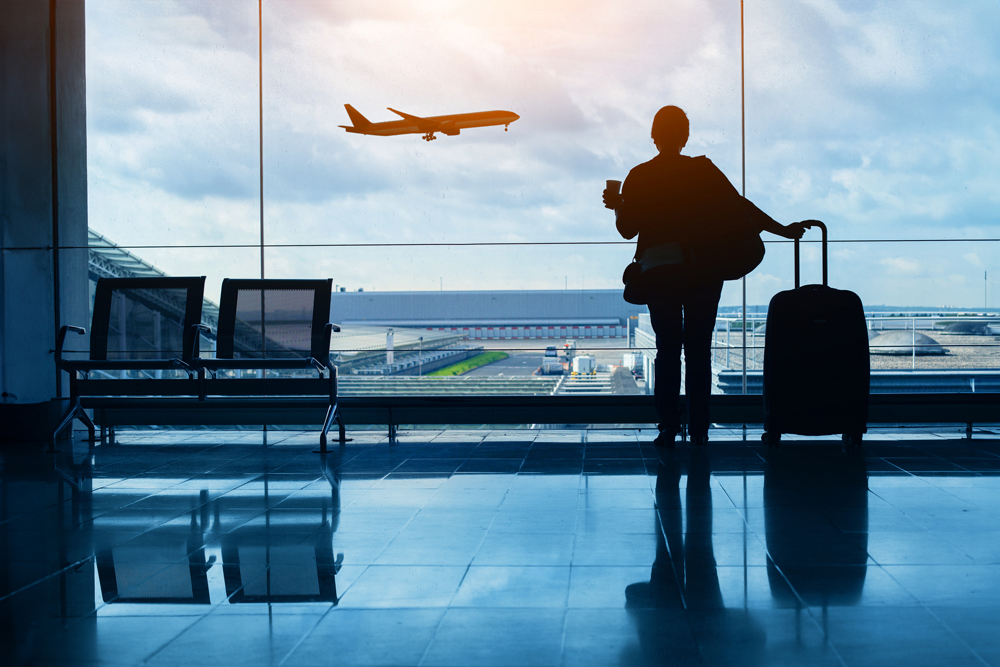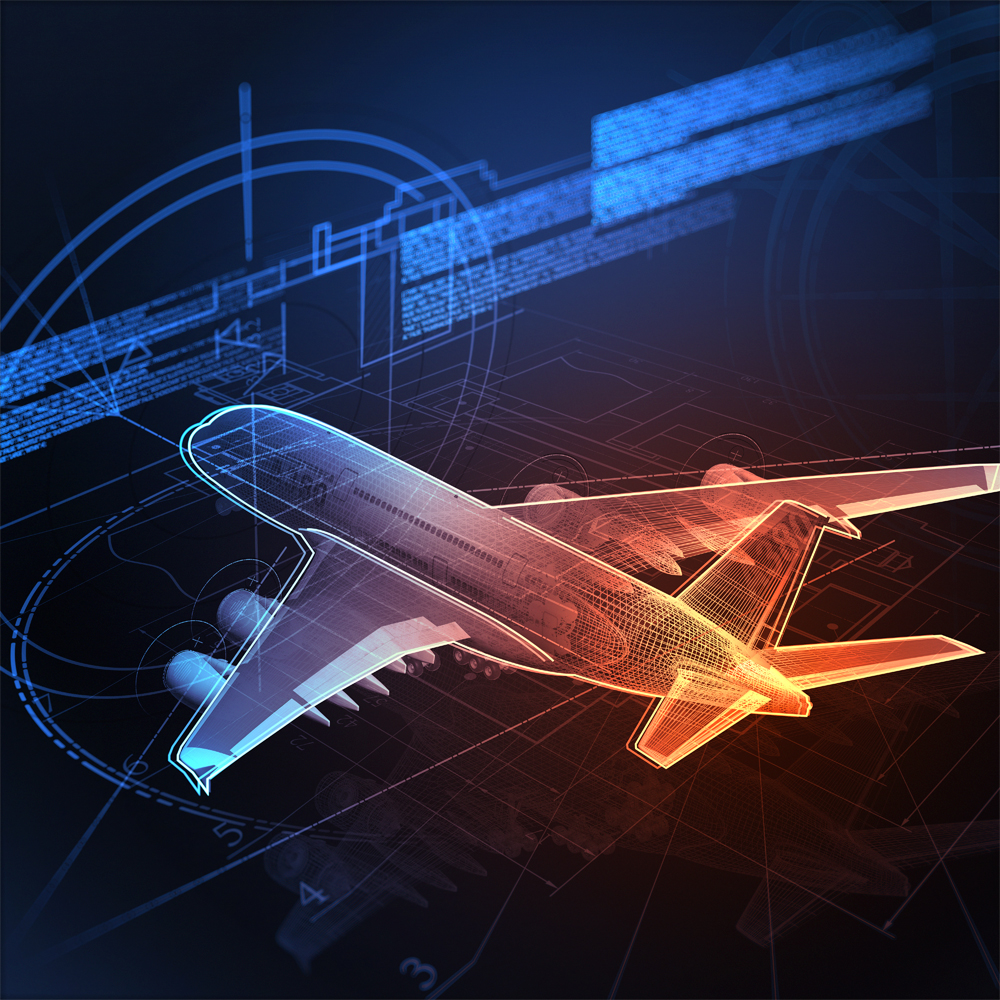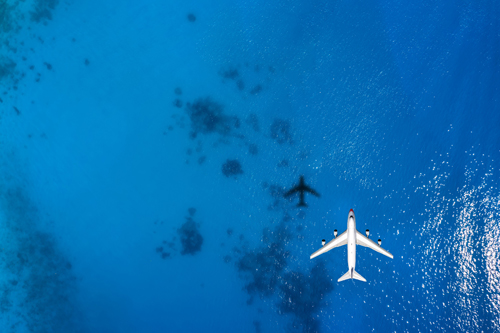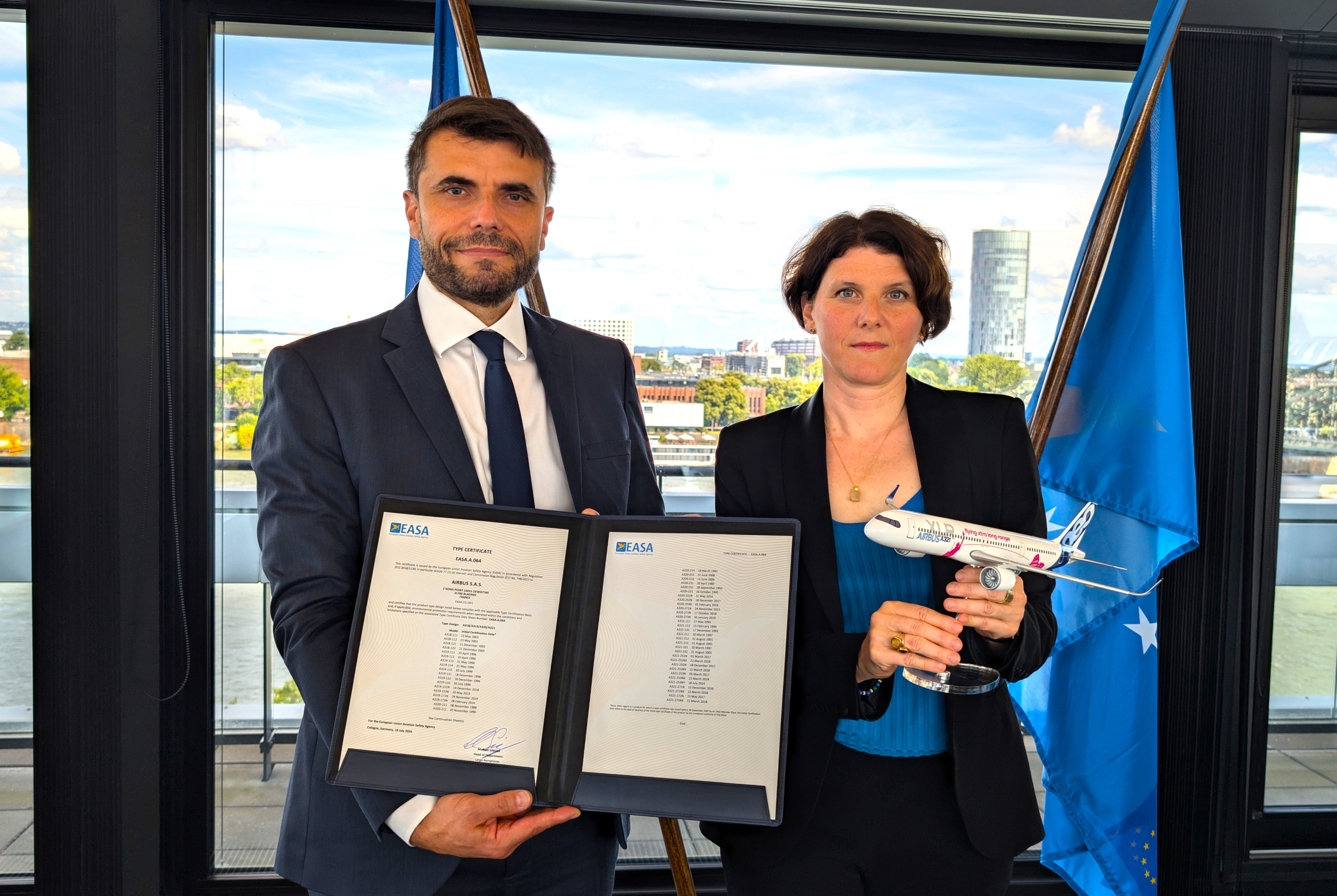 A safe aviation ecosystem is achieved through many players such as airports, air traffic control service providers, manufacturers, operators, regulators, and others, prioritising safety in everything they do.
A safe aviation ecosystem is achieved through many players such as airports, air traffic control service providers, manufacturers, operators, regulators, and others, prioritising safety in everything they do.
An aircraft that is safe to fly is naturally a very important piece of this system. Through its certification mandate, EASA is guaranteeing that aircraft flying within, in and out of the European Union (EU), and the EFTA countries (Iceland, Liechtenstein, Norway and Switzerland,) are safe, bringing confidence in air travel for EU citizens. These 31 countries are together known as the EASA member states.
The basics
To become operational, new aircraft must obtain a validation known as a “Type Certificate” from the responsible aviation regulatory authority. This certificate testifies that the aircraft of this type meet the safety requirements set by the European Union.
Often when we think about aviation, we think of commercial civil airplanes, however, this process of certification and awarding a Type Certificate applies to several aircraft types like small airplanes, rotorcraft, balloons, electric take-off and landing (e-VTOL) aircraft.
EASA is the responsible authority for certifying aircraft designed in the EASA member states however the Applicant is responsible of the development and the design of the Aircraft and eventually to demonstrate compliance with the applicable requirements.
Certification: a two-pillar approach of overseeing the product and the Design Organisation
Certification is a two-pillar process: the product side (the aircraft); and the ability of the Design Organisation of such a product to be doing this job. 
As the name indicates, a Design Organisation is in charge of the aircraft design, as well as other tasks such as changes and repairs to the aircraft, among others. Such organisations need to demonstrate that they have the right organisation, procedures, competencies and resources. Design Organisations need to be approved by EASA. This is already an important piece of the certification process.
When making a new aircraft operational, EASA minimises risks to safety on the product side by verifying compliance against technical specifications and optimises performance through the oversight of Design Organisations.
Certification Process
The Type Certification process goes through 4 stages:
- Technical Familiarisation and Certification Basis;
- Establishment of the Certification Programme;
- Compliance demonstration; and
- Technical closure and issue of approval.
It is a very formal and exhaustive process. For a large aircraft, such as the commercial planes we fly in as passengers, the process usually takes 5 to 7 years.
EASA also offers what we could call a “pre-stage” – not mandatory – though its Innovation Services. Via the Innovation Services, EASA supports the development of an innovative concept from the early stages when such concept is not yet so mature.
Let’s think of a fictional manufacturer company called Superflying to use as an example to go through the certification process.
(0) Pre-certification – EASA’s innovation services
SuperFlying, for which the regulator is EASA, has a concept for a new aircraft. Thanks to EASA Innovation Services, SuperFlying can already get support on their project from the very early stages. This work ahead of certification supports innovation by minimising risks to approval, ensuring it is the right path to meet the certification requirements and anticipating any regulatory gaps or issues.
1. Technical Familiarisation and Certification Basis
 With or without EASA’s support via the Innovation Services, once the project is mature enough, SuperFlying presents the project to EASA to apply for the Type Certification. At this stage, their concept for the aircraft needs to be already well defined. The final product might have some slight deviations from the original design, but any change needs to be justified.
With or without EASA’s support via the Innovation Services, once the project is mature enough, SuperFlying presents the project to EASA to apply for the Type Certification. At this stage, their concept for the aircraft needs to be already well defined. The final product might have some slight deviations from the original design, but any change needs to be justified.
Through exchanges with SuperFlying, EASA establishes the Certification Basis. The Certification Basis is the set of rules that will apply for the certification. It includes the Certification Specifications (CS) relevant for the type of aircraft (for instance, CS-25 is the applicable requirement for Large Airplanes) and any other Condition that might apply for specific innovative aspects of this aircraft.
Aviation is always evolving. After 5 years, EASA is entitled to revisit the Certification Basis and update it with anything relevant that has been learned in that period, for instance, enhanced requirements on environmental standards.
2. Establishment of the Certification Programme
The determination of the Means of Compliance is the next important step in the certification process. EASA and the Applicant will define and agree on the means to demonstrate compliance against each requirement of the Certification Basis. The approach selected will be addressed in the Certification Program.
3. Compliance demonstration
Superflying will demonstrate compliance of its design via the Means of Compliance previously agreed. Things like the airframe, engines, control systems, electrical systems, flight performance, etc., will be demonstrated against the relevant requirements part of the Certification Basis. It is the responsibility of the EASA experts to carefully check the demonstration of compliance by, for example, reviewing documentation or witnessing tests.
This is, in general, the longest phase of the Type Certification process. In the case of large aircraft, the period to complete the compliance demonstration is set to five years and can only be extended if duly justified.
4. Technical closure and issue of approval
Eventually, when compliance demonstration is established, EASA completes its assessment and issues the Type Certificate. Superflying is now a Type Certificate Holder. That means that their aircraft can enter into service and start its operations!
Continuing airworthiness
 Superflying’s aircraft was certified, but that doesn’t mean that EASA’s work in ensuring air safety on the aircraft side stops – EASA only concluded the certification process. Now we move to a new stage called “continuing airworthiness”, meaning, ensuring that the aircraft continues to be safe to fly. Superflying needs to report to their National Authority any occurrences that could lead to an unsafe condition. When this happens, an investigation is opened and Superflying needs to propose corrective actions to restore the safety level. Once again, this process needs to be validated by EASA.
Superflying’s aircraft was certified, but that doesn’t mean that EASA’s work in ensuring air safety on the aircraft side stops – EASA only concluded the certification process. Now we move to a new stage called “continuing airworthiness”, meaning, ensuring that the aircraft continues to be safe to fly. Superflying needs to report to their National Authority any occurrences that could lead to an unsafe condition. When this happens, an investigation is opened and Superflying needs to propose corrective actions to restore the safety level. Once again, this process needs to be validated by EASA.
International cooperation on Certification
EASA validates Type Certificates issued by the aviation authorities of the United States of America, Canada and Brazil. In the same way, these authorities also validated Type Certificates issued by EASA. This is because agreements established on mutual recognition and acceptances between these Authorities facilitate the validation process. Typically, the validating authority is already in contact with the certifying authority during the certification process, to speed up the final validation and ensure any concerns it may have are addressed.
For this aircraft, Airbus proposed to build in a new fuel tank, known as the Rear Central Tank. The proposal was classified as a major significant change, based on the closest derivative aircraft, the A321Neo. The Rear Central Tank represented a novel unusual design, that was not fully covered by the existing CS-25 certification specifications. EASA’s approach in such a situation is to lay down what is known as “Special Conditions” to address any gaps or inadequacies in CS-25.
In this case, the safety challenge was posed by the addition of the new fuel tank, integrated within the fuselage, in the underbelly of the aircraft. The special conditions set focused on crash safety, fire safety and occupant protection. For example, the risk of fire had to be mitigated to allow for a safe evacuation of passengers and crew in an accident.
Additionally, the landing gear was reinforced and local structure changes made to accommodate the increased take-off weight resulting from the extra fuel carried. The fuel system was adapted to integrate the Rear Central Tank. Some other product enhancements were made, for example to the flight controls. In the run-up to certification, EASA and Airbus held over 400 joint meetings of technical experts, 900 flight test hours on three test aircraft, more than 500 certification documents were produced, reviewed and signed off, tests were witnessed, inspections carried out and audits completed.

“The aim of every action taken by EASA is to ensure that the aircraft is safe. Our requirements can be quite stringent and pose significant challenges to the manufacturer. But we have a truly common aim of ensuring safety.” – Florian Guillermet, EASA’s executive director, awarding the Type Certificate to the Airbus A321XLR.
Stay tuned on what makes aviation safe
As mentioned before, certifying an aircraft is only one piece of the puzzle to ensure that EU citizens benefit from safe air travels. Check other articles on EASA Light to learn more on what makes aviation safe, for example:
- EASA’s regulatory role
- Airports: how EASA ensures safe air travel, at take-off and landing
- EASA Cooperation with the International Civil Aviation Organization (ICAO)
And register to be notified when new articles come out!
